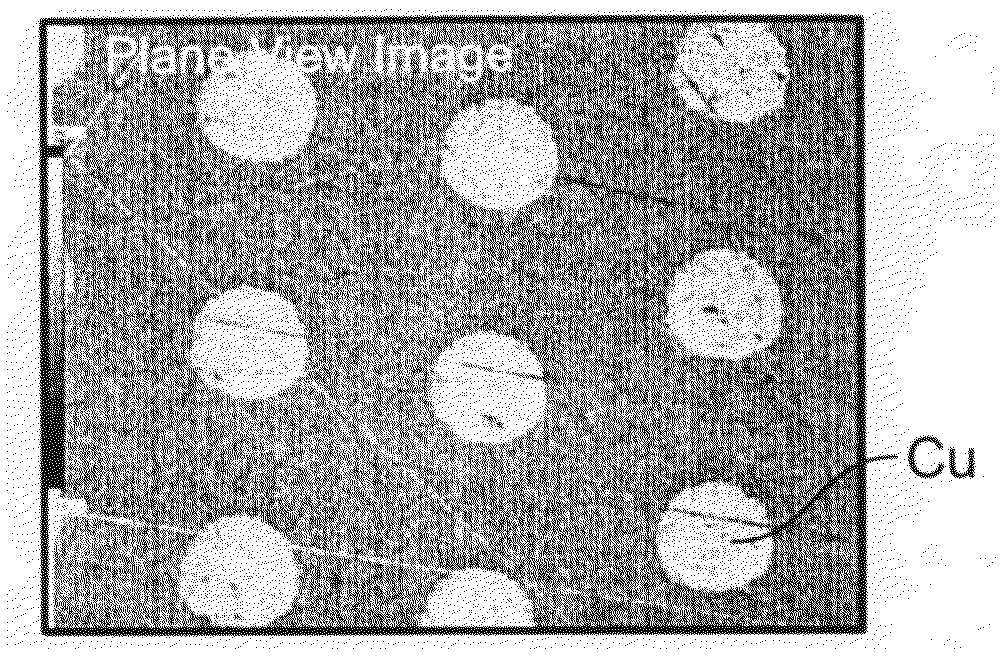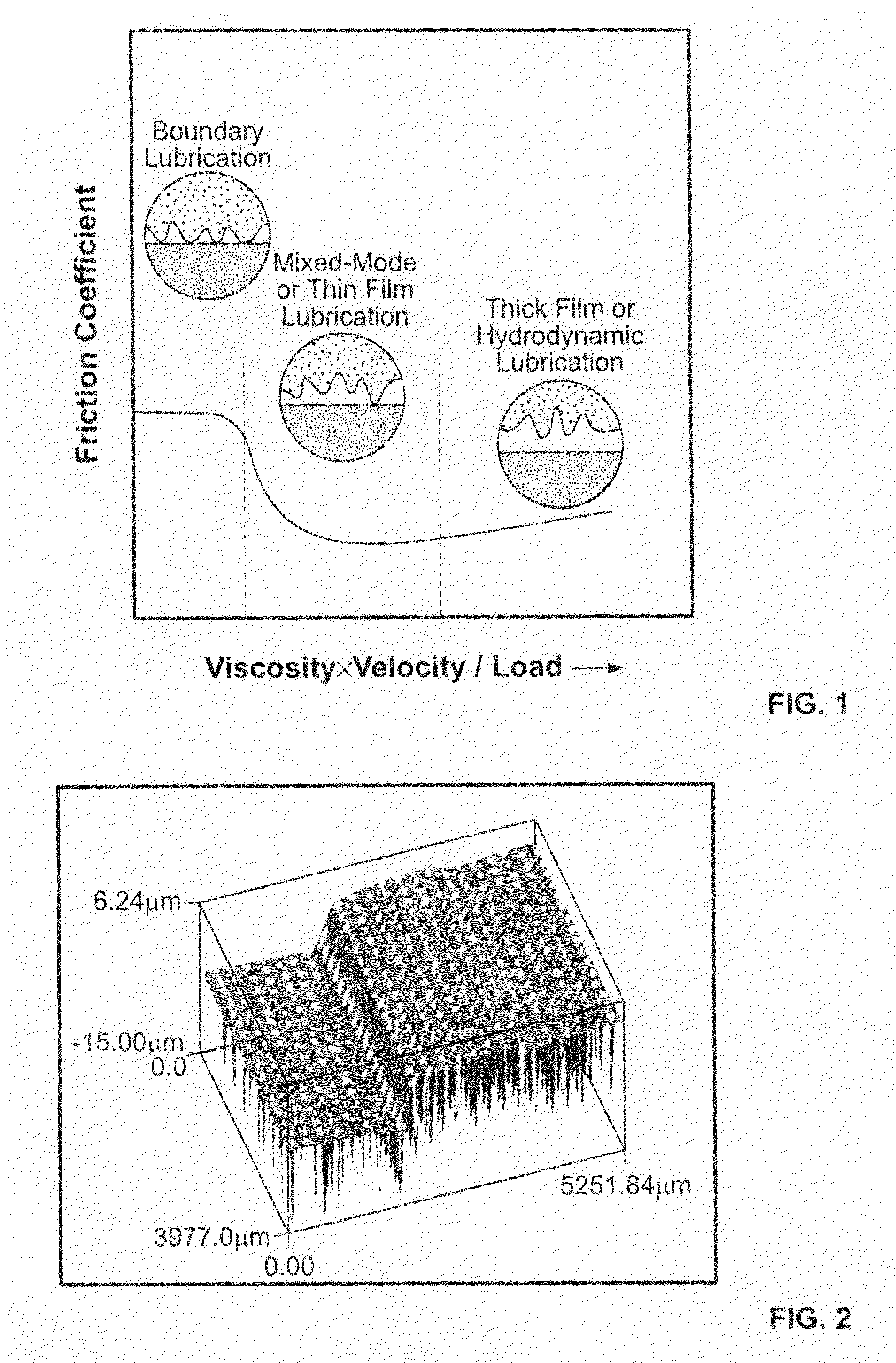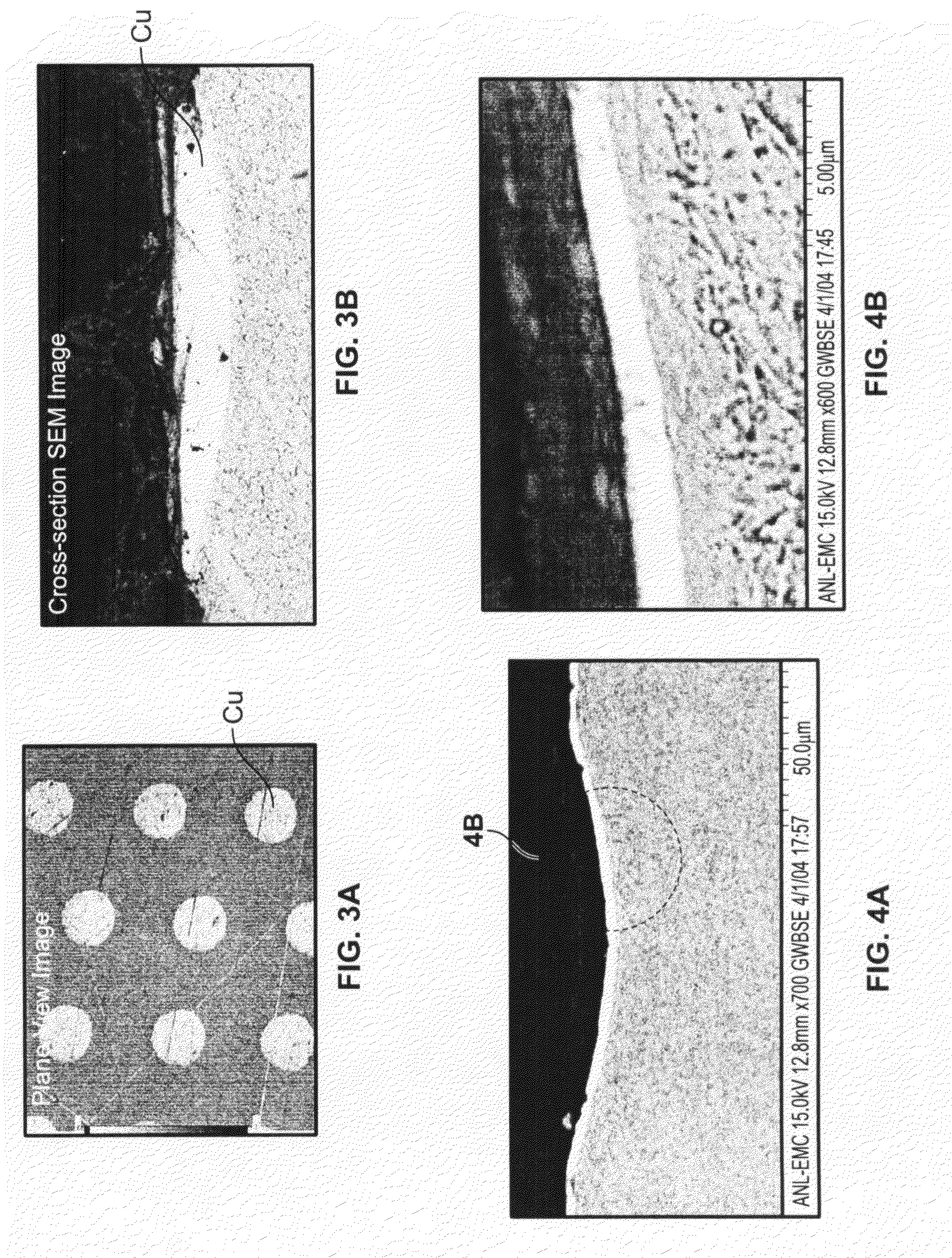Modulated composite surfaces
a composite surface and module technology, applied in the field of low friction compositions, can solve the problems of reducing the effectiveness of lst over time, reducing the friction and wear of the surface, so as to reduce friction and wear, prevent scuffing, and reduce the effect of friction
- Summary
- Abstract
- Description
- Claims
- Application Information
AI Technical Summary
Benefits of technology
Problems solved by technology
Method used
Image
Examples
examples
[0028]The following non-limiting examples of embodiments of the present invention can reduce friction and increase wear and scuffing resistance of laser textured surfaces. These surfaces were laser textured and also further were modified by coating with a superhard nano composite coating made out of Mo—N—Cu and by filling the dimples with pure Cu. As an example, the effects of such combined surface treatment on scuffing resistance of five different samples were compared.
[0029]A reciprocating wear test machine capable of providing reliable friction, wear, and scuffing values was used to test the samples. H13 steel was used as the substrate material for all the samples described herein, and the surface texturing of H13 was performed by means of laser dimpling method. However, one of ordinary skill in the art will appreciate that the scope of the present invention is not limited to H13 steel and laser dimpling. Any type of other solid materials including ceramics, composites, and polym...
PUM
| Property | Measurement | Unit |
|---|---|---|
| distance | aaaaa | aaaaa |
| friction coefficient | aaaaa | aaaaa |
| friction coefficient | aaaaa | aaaaa |
Abstract
Description
Claims
Application Information
 Login to View More
Login to View More - R&D
- Intellectual Property
- Life Sciences
- Materials
- Tech Scout
- Unparalleled Data Quality
- Higher Quality Content
- 60% Fewer Hallucinations
Browse by: Latest US Patents, China's latest patents, Technical Efficacy Thesaurus, Application Domain, Technology Topic, Popular Technical Reports.
© 2025 PatSnap. All rights reserved.Legal|Privacy policy|Modern Slavery Act Transparency Statement|Sitemap|About US| Contact US: help@patsnap.com



